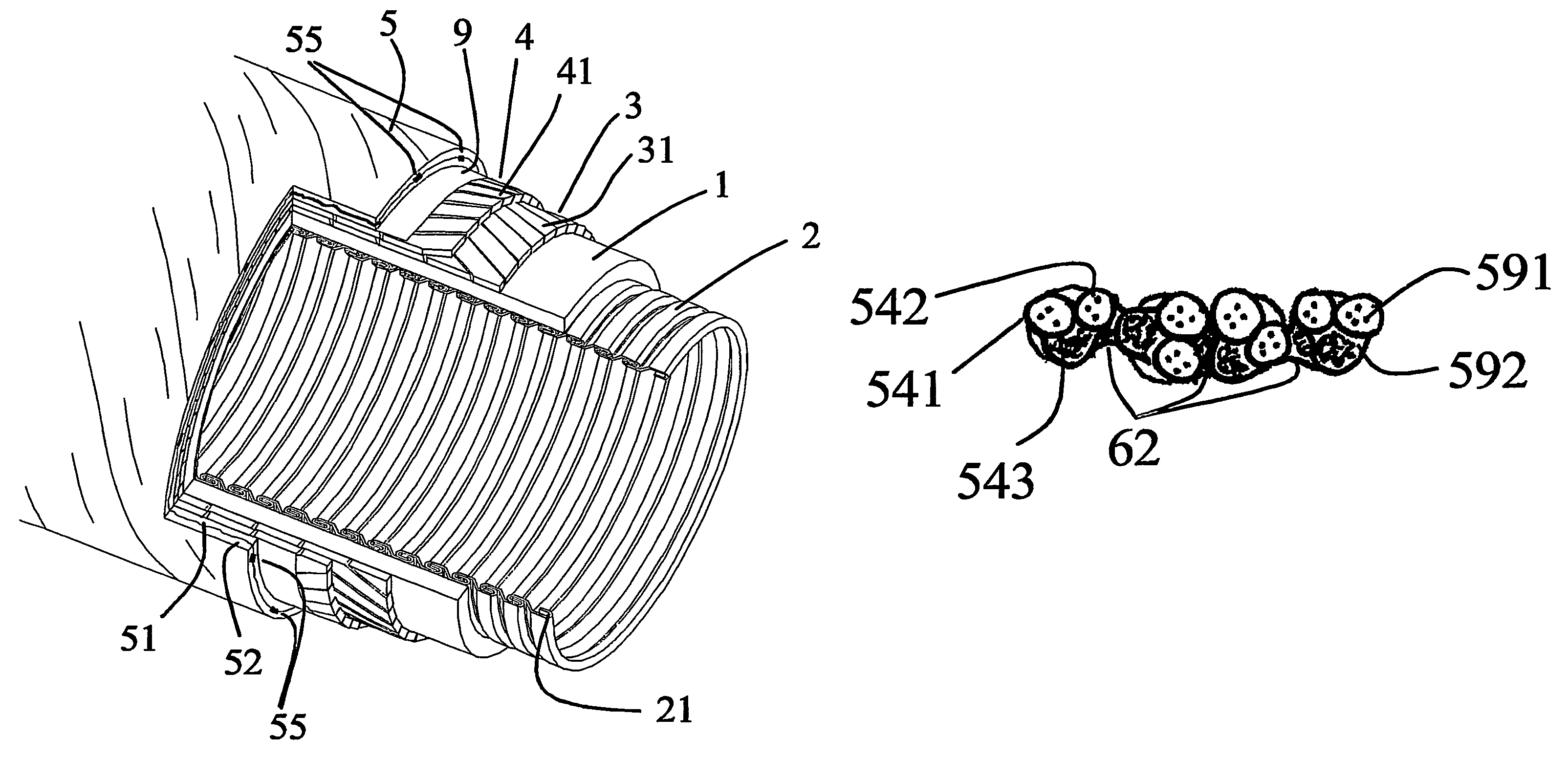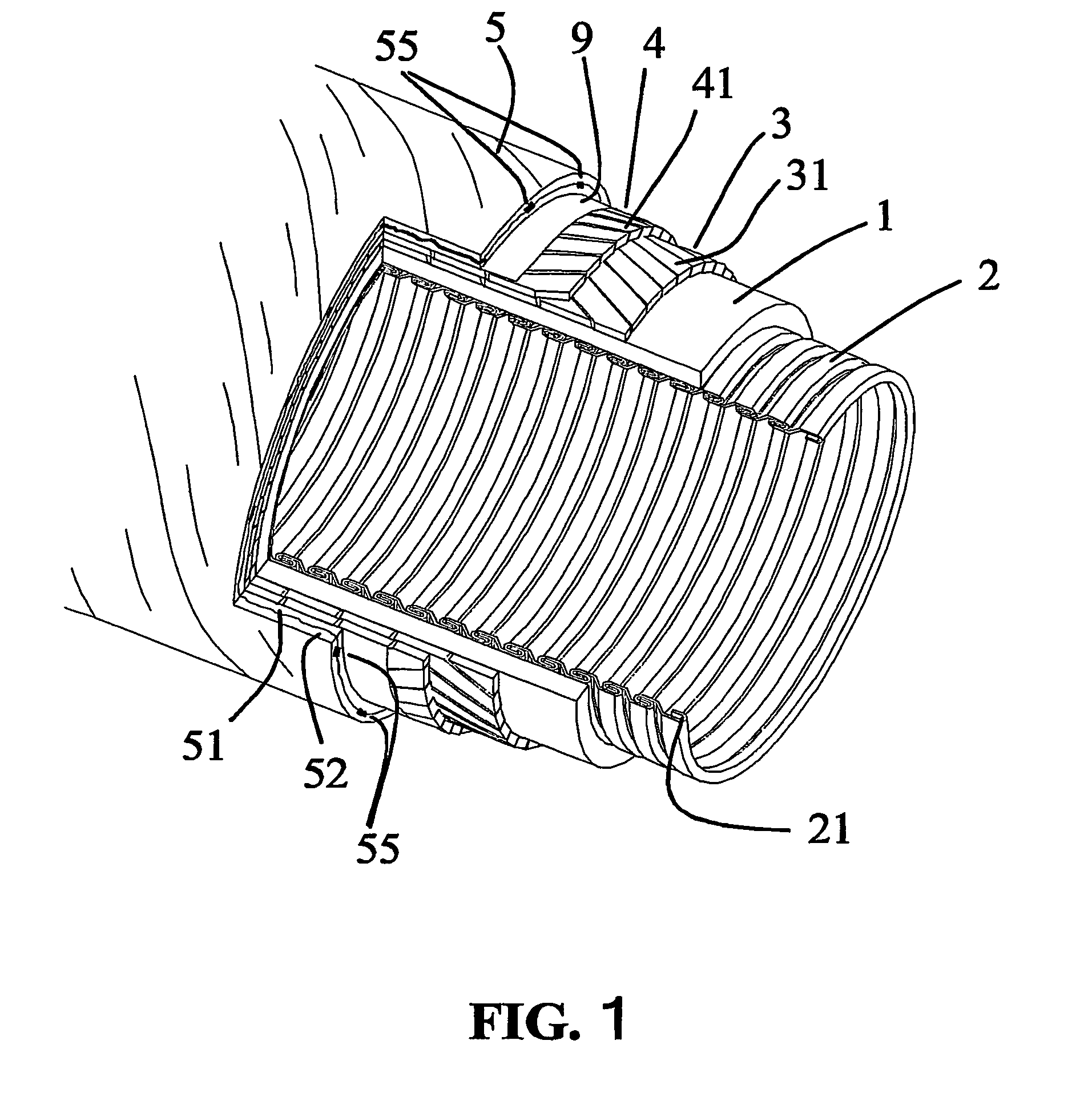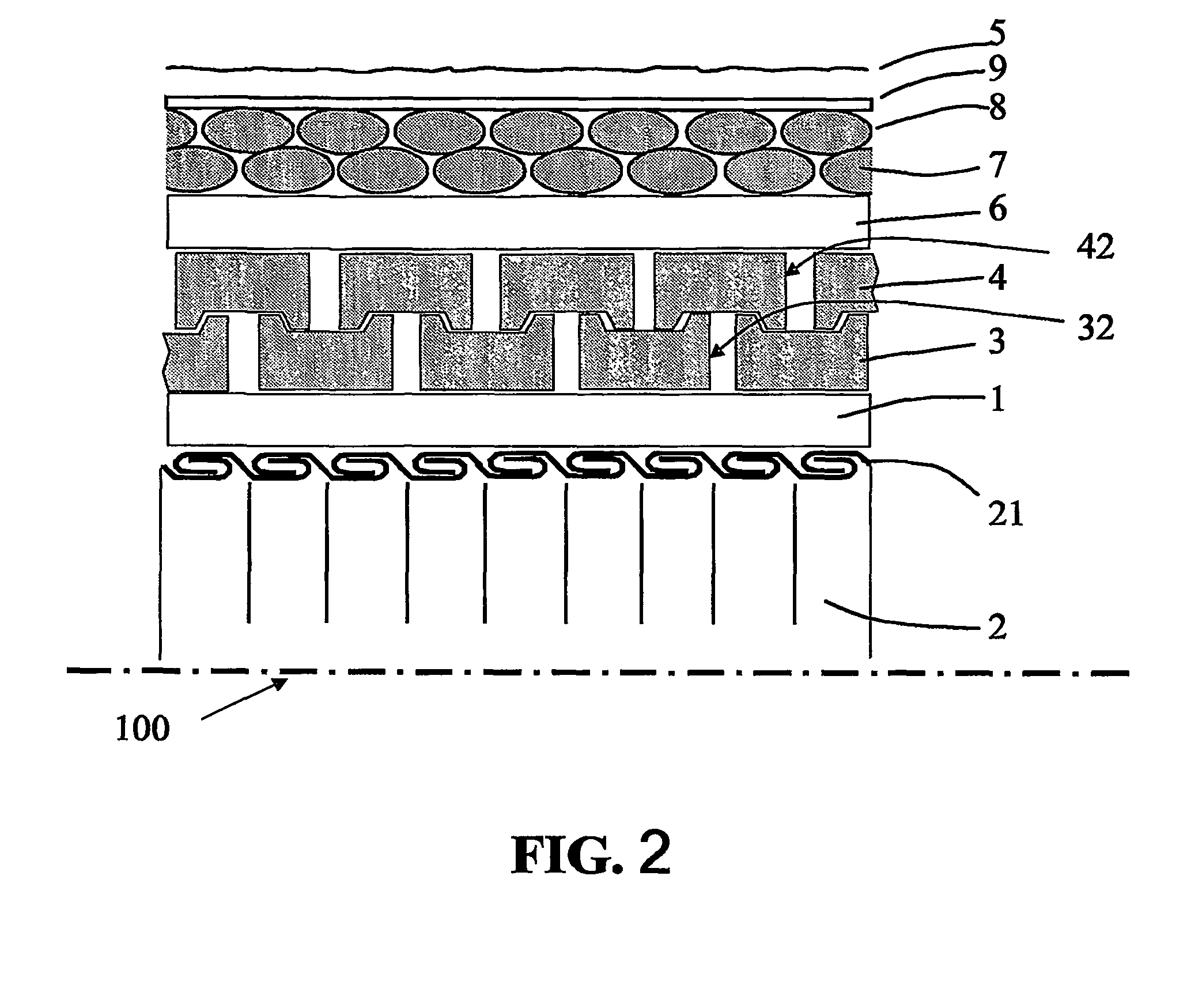Flexible pipe with a permeable outer sheath and a method of its manufacturing
a flexible pipe and outer sheath technology, applied in the field of flexible pipes, can solve the problems of critical compressive forces in the armouring layer, damage to the outer sheath, and large machine requirements compared to those of the rope and cable industry, and achieve the effects of improving the flexibility of the pipe, preventing damage, and being flexible and yet fixed structur
- Summary
- Abstract
- Description
- Claims
- Application Information
AI Technical Summary
Benefits of technology
Problems solved by technology
Method used
Image
Examples
Embodiment Construction
[0085]FIG. 1 shows a perspective view with a cut-out of an embodiment of a flexible pipe according to the invention illustrating various layers of the pipe.
[0086]In FIG. 1, an inner barrier liner 1 is shown surrounding an (optional) inner armouring layer 2. The purpose of the inner armouring layer is to prevent a collapse of the inner liner in case the pressure difference between its inner and outer surface exceeds the value which the liner itself is able to withstand. The inner armouring layer 2 comprises a metal tape 21 that is helically wound to create an inner tube. The metal tape is—during the winding process—provided with flaps that are intertwined thereby locking individual turns of the tape to each other in such a way that the inner armouring layer 2 is capable of being deflected out of its longitudinal direction. While the inner armouring layer is not inherently tight, the surrounding inner liner 1 has the purpose of fully or partially preventing the escape of liquid or gas...
PUM
| Property | Measurement | Unit |
|---|---|---|
| water flow velocity index | aaaaa | aaaaa |
| water flow velocity index | aaaaa | aaaaa |
| water flow velocity index | aaaaa | aaaaa |
Abstract
Description
Claims
Application Information
 Login to View More
Login to View More - R&D
- Intellectual Property
- Life Sciences
- Materials
- Tech Scout
- Unparalleled Data Quality
- Higher Quality Content
- 60% Fewer Hallucinations
Browse by: Latest US Patents, China's latest patents, Technical Efficacy Thesaurus, Application Domain, Technology Topic, Popular Technical Reports.
© 2025 PatSnap. All rights reserved.Legal|Privacy policy|Modern Slavery Act Transparency Statement|Sitemap|About US| Contact US: help@patsnap.com



